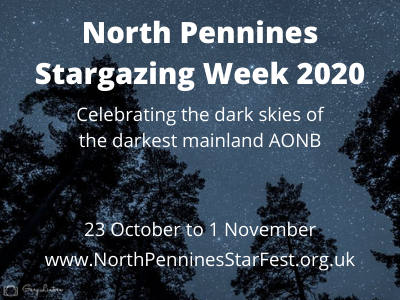North Pennines Stargazing Week
Daily star tips
1 November 2020
Daily star tips from Richard Darn
Every day we will be posting a ‘star tip’ from astronomer Richard Darn, helping you explore the night sky.
1 November – seeing double
We’ve been dodging showers all week, but we have seen stars! Here’s our last star tip of the day. It’s easy to become a night-time sleuth just by looking at the stars.
Pop out tonight (weather permitting) and you’ll see not all of them are the same colour. Some look white, others have a red or orange tint. The colour is down to the star’s temperature – very hot ones are white or blue, whilst a more reddish tinge indicates relatively cooler conditions.
For the record our day-time sun is a yellow star. Some stars also have close companions that form a system. The most obvious one is the second star in the handle of the Plough called Mizar. It has a little companion called Alcor, easy to see with the naked eye, and which is gravitational bound to its brighter cousin.
If you point a telescope at Mizar, you will also discover it has another much closer partner and what’s more astronomers say there are no less than six stars in this crazy stellar system, all orbiting a common centre of gravity.

31 October – Halloween full moon and Uranus
What could be more appropriate on Halloween than having a full moon in the sky? Actually this is a blue moon because it’s the second full one we’ve had in October. It makes a spectacular sight, although to see fine details on the lunar surface it’s better to wait until it is at a partial phase. Tonight the Moon also provides a signpost to see a little observed planet – icy Uranus. Using binoculars, put the Moon in the lower left portion of the field of view and then look to the upper right and you should see a green ‘star’. This is Uranus, a gas planet four times the diameter of the Earth. It looks tiny because it is 20 times further from the Sun (1.8 billion miles) than our planet, taking 84 years to complete one orbit! It’s a chilly place at around minus 200 centigrade.

30 October – artificial satellites and shooting stars
Spend a wee while under a dark sky during #NorthPennStarWeek20 and you will discover there’s lots happening up there. Star-like objects flit across the sky, some very bright, and every so often we get a shooting star burning up and leaving behind a trail.
Most things moving in the sky are artificial satellites launched from Earth, or discarded rocket boosters. Some are top secret, others help forecast the weather, or keep your sat nav on track. There are some brilliant apps such as Heavens Above which will tell you when and where to look and even identify the object for you.
The brightest satellite is the International Space Station. It’s not always visible, but comes around every month and a half or so. It always travels west to east and can look like an aircraft with its landing light on. In reality it is 250 miles up and travelling at 17,500mph. The good news for early risers is that it crosses our region at 04.56 on 31 October, so set your alarm!
#NPennDarkSkies #backyardstargazing
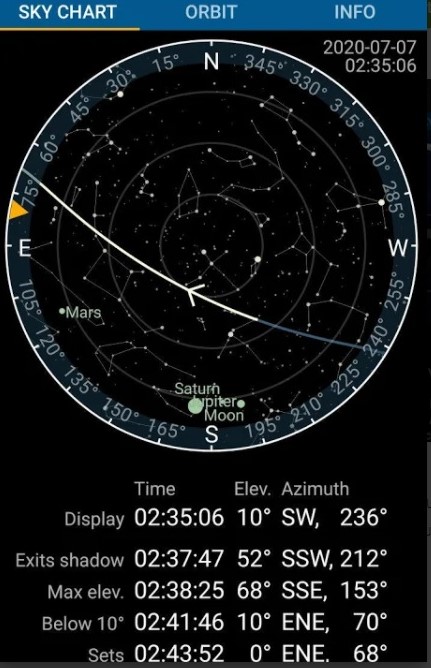
29 October – the Plough and the Pole Star
The night sky would be much easier to learn if it didn’t move around as much! We see different constellations as the seasons pass, but of course the stars also change position each night, caused by the spin of the Earth. For instance the famous Plough starts the evening low in the north, but ends it high in the sky.
All the stars do one complete circuit every 24 hours around a point conveniently marked by the Pole Star. To find it, locate the Plough and identify the two end stars of the ‘pan’, called Dubhe and Merak. Draw an imaginary line between the two and extend it another five times and you will land on the Pole Star. If you are heading in its direction you will always be going due north.
This is how people have found their way across land and sea for thousands of years!
Images: Dave Williams. #NorthPennStarWeek20 #backyardstargazing #NPennDarkSkies #stargazing
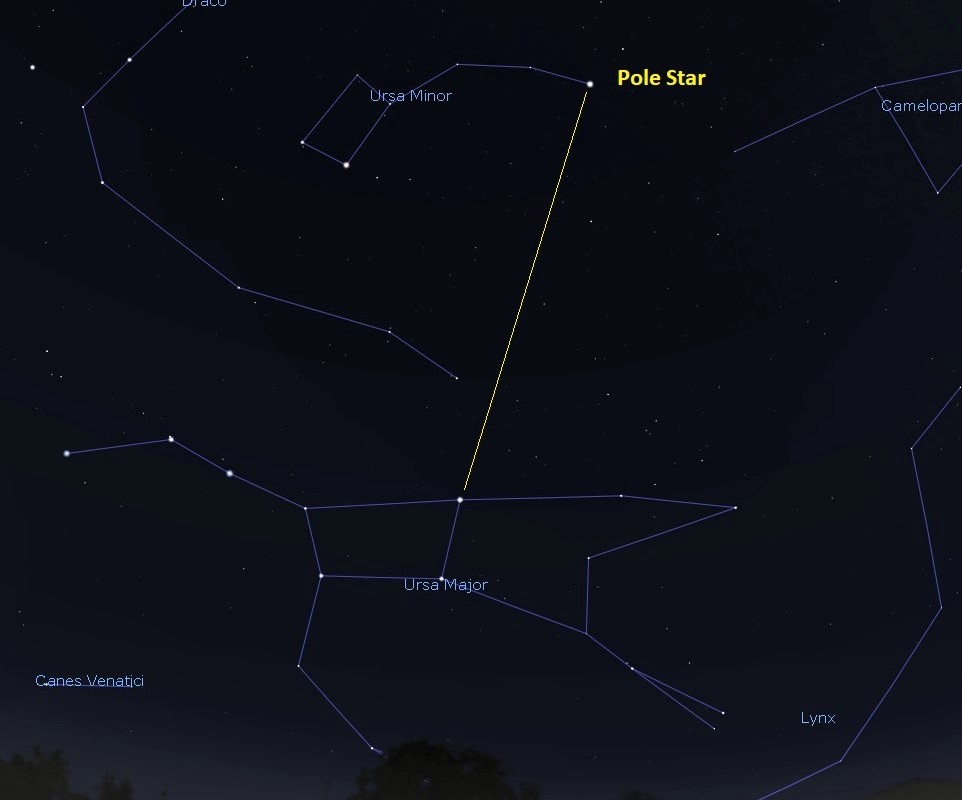
28 October – Mars
Mars is putting on its best show since 2012 and is very close to the Earth on its two year orbit around the Sun. By midnight it’s also pretty high in the southern sky, looking like a Chinese lantern and even outshining Jupiter. Modest telescopes may show dark markings on the Martian surface and perhaps a hint of the white southern polar cap. In the 19th century it was hoped that these shady zones might indicate vegetation. In reality Mars is a desert world where water is underground. Given its proximity (a mere 42 million miles away tonight) a fleet of space probes has been launched, arriving early next year. Mars can be as far as 220 million miles away, so take advantage of this wondrous apparition, which won’t be matched until 2035.

27 October – Jupiter and Saturn
Our targets for tonight are the two biggest planets in the Solar System. Directly south and low down as night falls, they are unmistakable, especially Jupiter, the brighter of the duo which looks like a brilliant star. Use binoculars and you will be amazed to discover you can see up to four of its moons as star-like objects. They orbit Jupiter and were first seen by Galileo in 1610. To its upper left you will glimpse a dimmer, but still quite bright yellowish “star”. This is magnificent Saturn. Almost twice as far as Jupiter at 890 million miles away, you will need a small telescope to see its famous rings. A magnification of about 35x will do the job. Both are gaseous worlds – they have no solid surface to walk on. These two come very close on 21 December, almost appearing as one to the naked eye in the western sky as night falls. The last time they were this snug was 1623!


26 October – Andromeda Galaxy
So what’s the furthest naked eye object you can see from the North Pennines AONB? You might be surprised to learn that it is a galaxy far, far away. Like the Milky Way, the Andromeda Galaxy is a huge disc of stars, perhaps as many as 300 billion. To dark adapted eyes it looks like a hazy extended glow just below the distinctive “W” shaped constellation called Cassiopeia. By midnight it’s high in the sky and perfect for viewing, especially with binoculars. Use this simple finder chart to track down this alien star city. But be patient and don’t give up too quickly. Remember the stars you can see in the night sky are part of our Milky Way – we are looking past these when we spy the much more distant Andromeda Galaxy. So how far is it? Light from the sun takes just eight minutes to reach the Earth. From Andromeda it takes 2.5 million years!
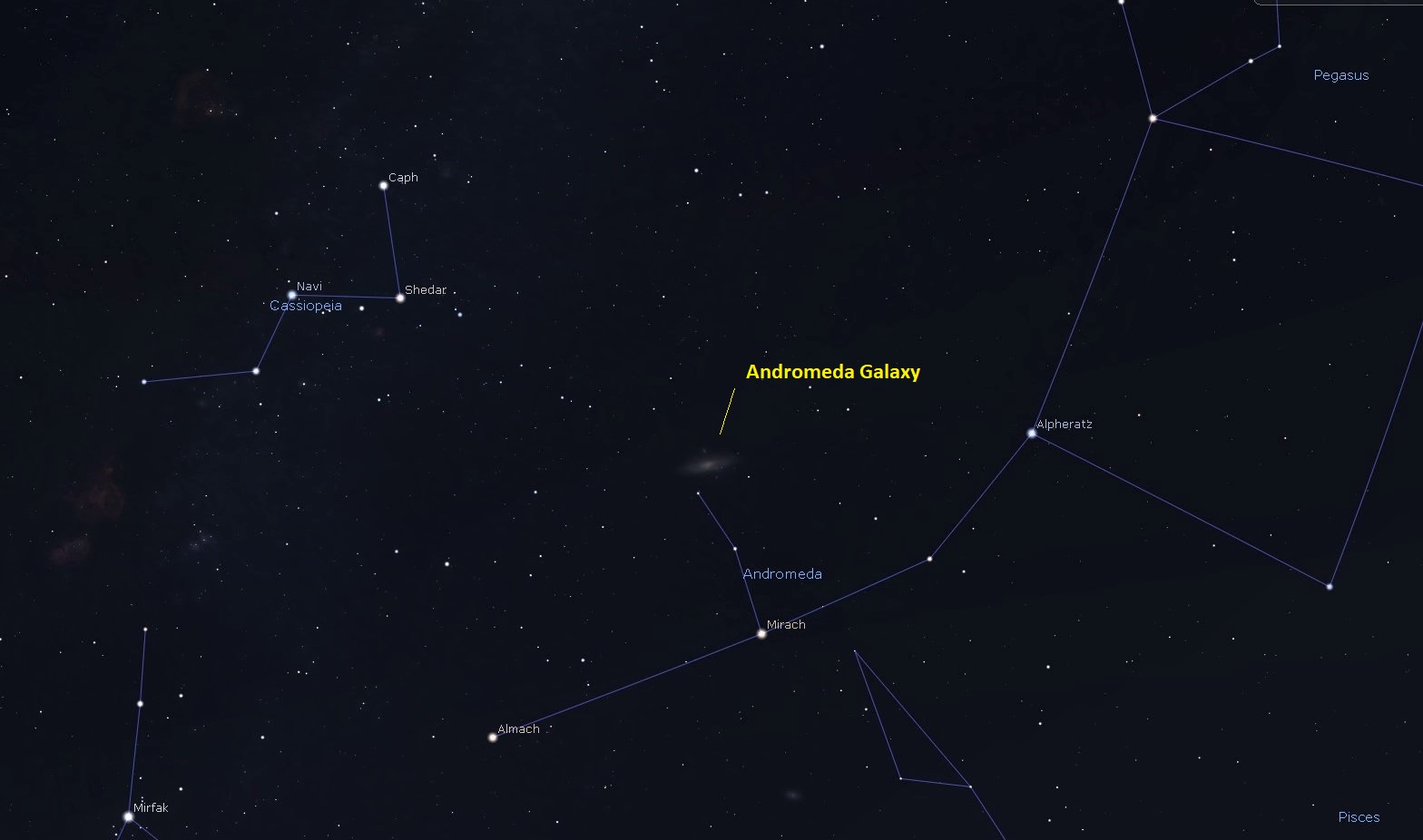

25 October – Milky Way
Did you manage to see the Summer Triangle of stars last night in between the rain showers? If you did and you were in a dark spot, you might have seen a hazy band of light passing right through this area. This is the Milky Way. If it’s clear tonight (forecast suggests we’ll see stars at some point!) go out and after letting your eyes get dark adapted you should be able to trace it further through more constellations. Eight out of 10 Brits can’t see this amazing object from where they live because of light pollution. But from the North Pennines it’s obvious. What is it? It is one of the spiral arms of our very own galaxy, which we also call the Milky Way. Use binoculars and you will see the glow is caused by millions of dim stars, some of the 200 million suns in our galaxy. Picture: Milky Way over High Force. Gary Lintern Photography.
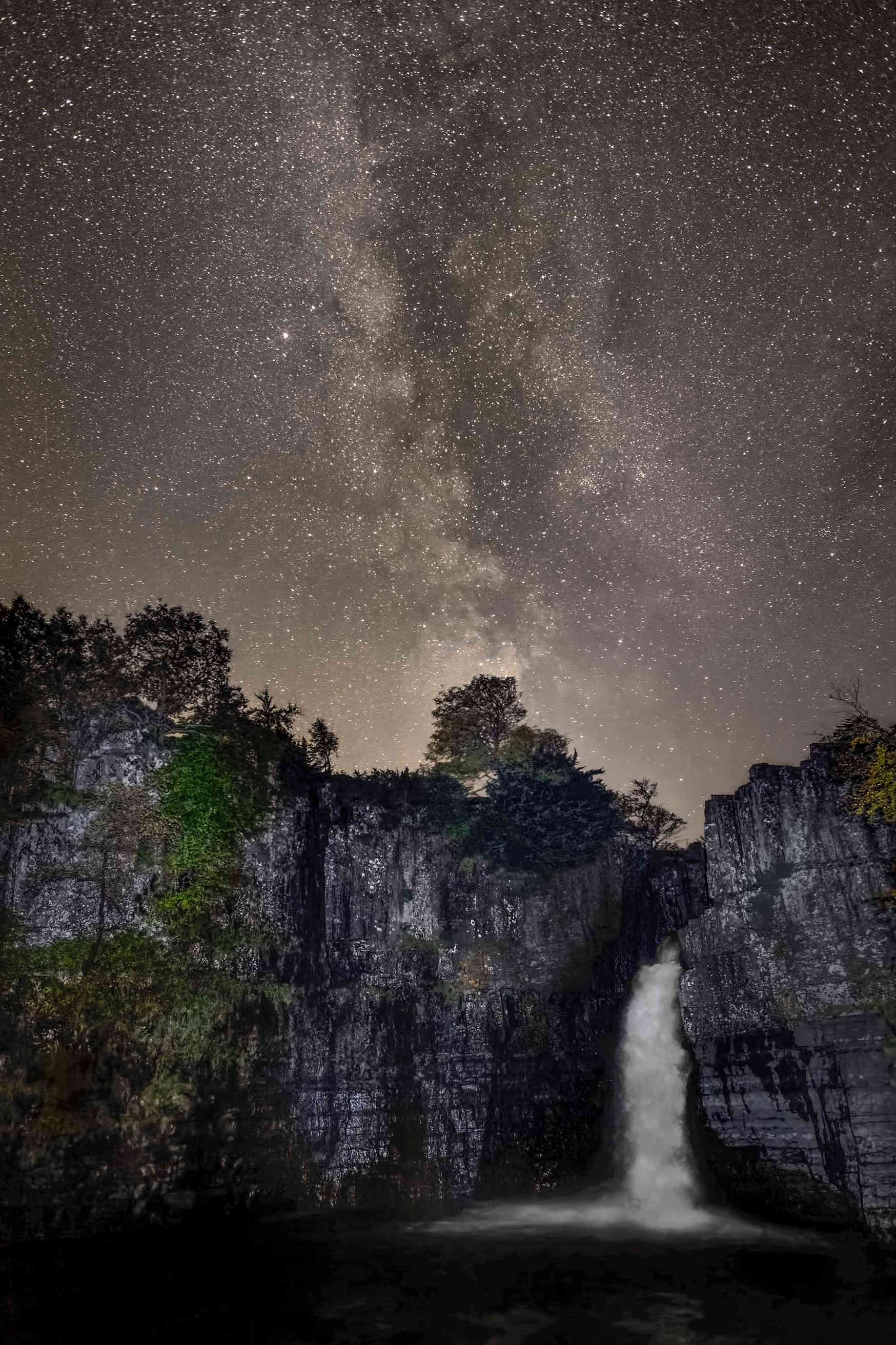
24 October – Summer Triangle
Did you manage to see the moon last night? Autumn is such a great time to go stargazing and at the moment a trio of sparkling stars are also putting on their best show. Go out mid-evening, face south and look directly up. The very brightest star is called Vega. To its upper left is Deneb, not quite as bright as Vega, and the other member of this stellar threesome is Altair, lower down and a tad blueish. Draw a line between them and you get the so-called Summer Triangle, a term coined by Sir Patrick Moore. If you have to dodge rain showers and observe later the stars will have shifted to the west a bit. These stars, like all the others in the sky, are the same kind of object as our daytime Sun. But they are so far away they look like points of light rather than fiery spheres. To give you an idea of distance, it takes eight minutes for sunlight to reach Earth, but 16 years from Altair, 20 years from Vega and over 1500 years from Deneb! #NorthPennStarWeek20 #backyardstargazing

23 October – First Quarter Moon
Let’s get #NorthPennStarWeek20 underway with a spot of moon watching. Tonight is the perfect time to spy our nearest neighbour and clear periods are forecast. Although it looks like a half moon, astronomers refer to it as being at first quarter. That means sunlight is slanting down on the lunar surface casting craters and mountains into sharp relief and not bleaching them out, something we see at full moon. Even binoculars will show lots of features. The dark areas have fewer craters because these are lava flows which have obliterated the older scars of bombardment by space rocks. One of them is the Sea of Tranquillity, where men first stepped foot on the moon in 1969. If you have a telescope, try taking a picture. Hold your smartphone over the eyepiece and with a steady hand you’ll be amazed at what you can capture.

About Richard

Astronomer Richard Darn helped Northumberland National Park and Kielder Forest become Europe’s biggest International Dark Sky Park and worked on the launch of Kielder Observatory. He works with the North Pennines AONB, along with Northumberland, Yorkshire Dales and North York Moors National Parks on dark sky conservation and promotion. Occasionally the limelight beckons and he has appeared on BBC Sky at Night and Stargazing Live, plus he’s a regular on BBC local radio. His passion is for a clear sky speckled with stars where light pollution is a bad memory.
#backyardstargazing #NorthPennStarWeek20 #NPennDarkSkies

